
5-7 #AfterHoliday : ISMC plans to invest USD3B in a chip fab in Karnataka, India; Applied Materials plans to invest over INR1,800 crore in India; Google has acquired microLED startup Raxium; etc.

SoundCloud has announced it has acquired Musiio, the artificial intelligence company at the forefront of machine learning technology. Musiio will amplify SoundCloud’s existing music intelligence capabilities and allow the company to further leverage its vast data to identify what’s next in music trends and talent. Musiio’s technology focuses on B2B audio reference search (AI that can “listen” to music), automated tagging, and playlisting tools for the music industry.(CN Beta, SoundCloud)
According to new research from Strategy Analytics, global smartphone shipments fell -11% YoY to 314M units in 1Q22. Samsung topped the global smartphone market with a healthy 24% share in 1Q22, the highest first quarter performance over the past five years. Apple ranked the second place with 18% share. Xiaomi, OPPO (including OnePlus) and vivo stayed in the top 5 list. (CN Beta, Strategy Analytics)
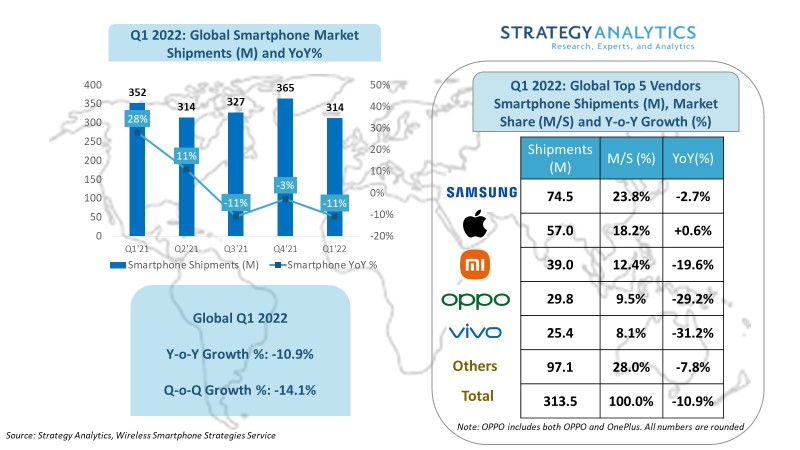
Smartphone shipments from ODM/IDH (Original Design Manufacturer/Independent Design House) companies grew 6.4% YoY in 2021, according to Counterpoint Research. This is attributed to a rebound of 4.5% YoY in the overall global smartphone market in 2021. The share of smartphone shipments from outsourced designs (from ODM/IDH companies) increased to 37% in 2021, up from 36% in 2020. Although the pandemic continued to impact the global smartphone market, and specifically the 4G SoC supply, ODMs managed to achieve decent growth. The ODM market growth was primarily driven by increasing orders from key clients Xiaomi, Lenovo / Motorola and Transsion. Key ODMs for Xiaomi benefitted the most due to its 31% YoY growth in shipments in 2021. (Counterpoint Research, Gizmo China)
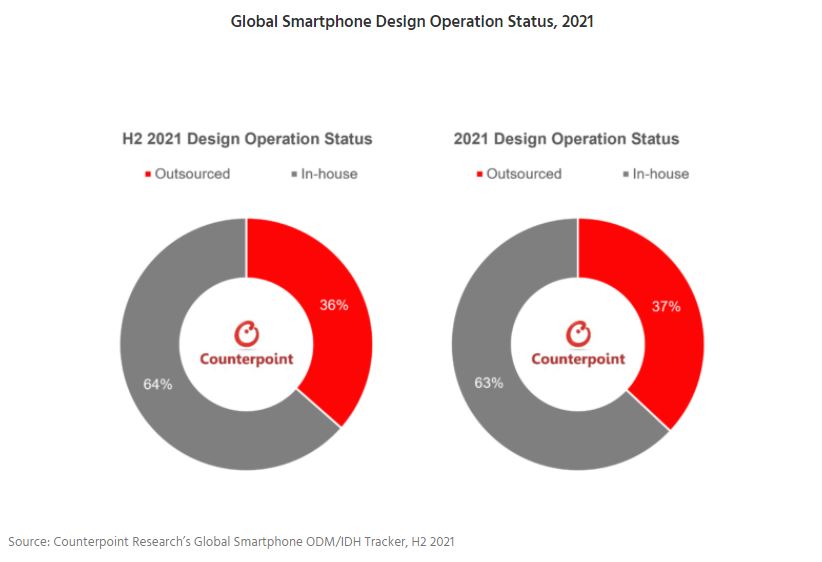
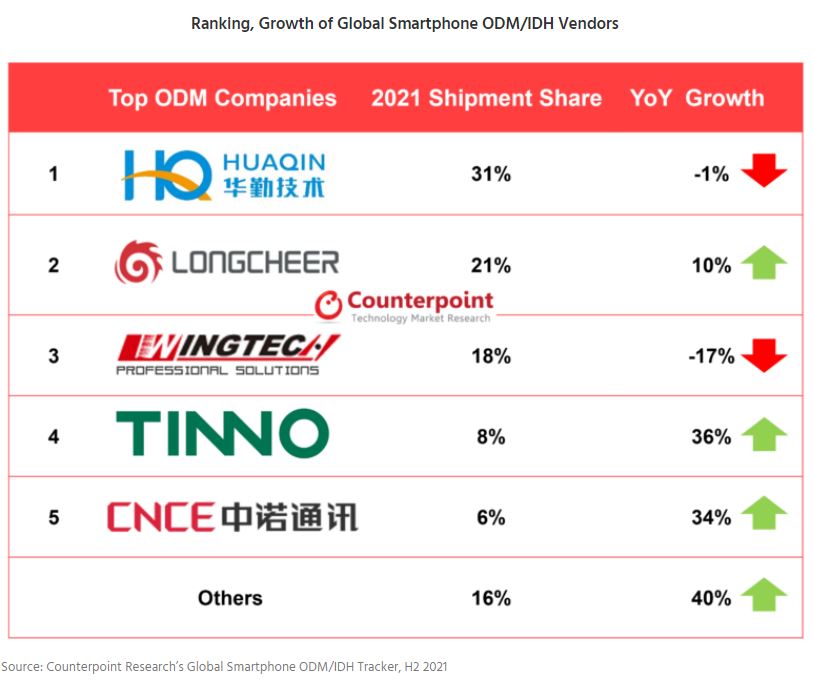
With handset sales in China still sluggish, inventory adjustments for related mobile phone component suppliers may be extended to the end of 2022, according to Digitimes. The semiconductor supply chain is conservative about the prospects of the Chinese mainland mobile phone market entering 2Q22. Although Xiaomi, OPPO and vivo lowered their total shipment estimates for 2022 at the end of 2021, Taiwanese mobile phone power amplifier (PA) foundries have said that orders from PAs in mainland China are still increasing. It was unclear at the time whether their order was to meet actual demand or to increase inventory. Sources say they are now facing rising inventory pressure. (Digitimes, Laoyaoba, Digitimes)

India’s smartwatch market grew 173% YoY in 1Q22, according to Counterpoint Research. The contribution of the <INR5,000 (USD67) retail price band increased to 87% from 78% in Q1 2021. The INR 1,000-2,000 (USD13-27) retail price band reached its highest ever share of 14% from just 2% a year ago. Many brands have started to focus on this low price tier to attract first-time users and acquire the smart band user base. Consumer awareness has also increased in this segment due to brands’ continuous efforts on marketing and promotions through online and offline channels. (GSM Arena, Counterpoint Research)


Starbucks will add “new concepts such as ownership and community-based membership models that we see developing in the Web 3 space”. Starbucks has announced its plans to create its own Non Fungible Tokens (NFTs) launching later in 2022. The company plans to create a series of branded NFT collections, the ownership of which initiates community membership, and allows for access to exclusive experiences and perks. The themes of these collections will be born of Starbucks artistic expressions, both heritage and newly created, as well as through world-class collaborations with other innovators and like-minded brands.(CN Beta, TechCrunch, The Verge, Starbucks, Neowin)

Back in Nov 2020, startup Open Ocean Engineering launched an autonomous trash collector aimed at clearing plastic waste from harbors, lakes and canals. After partnering with games titan Razer in 2021 for a radical redesign, a sleeker Clearbot has now started patrolling Hong Kong waters. The robotic marine garbage collector is 3 m (9.8 ft) in length and 1.3 m (4.2 ft) wide, and can be remotely controlled or operated autonomously – where it moves up and down a predefined area like a floating Roomba courtesy of an electric propulsion system with a four-hour battery and LiDAR obstacle avoidance. The battery pack can also be recharged via an optional solar docking station to further reduce the impact on the environment. (CN Beta, Microsoft, New Atlas)
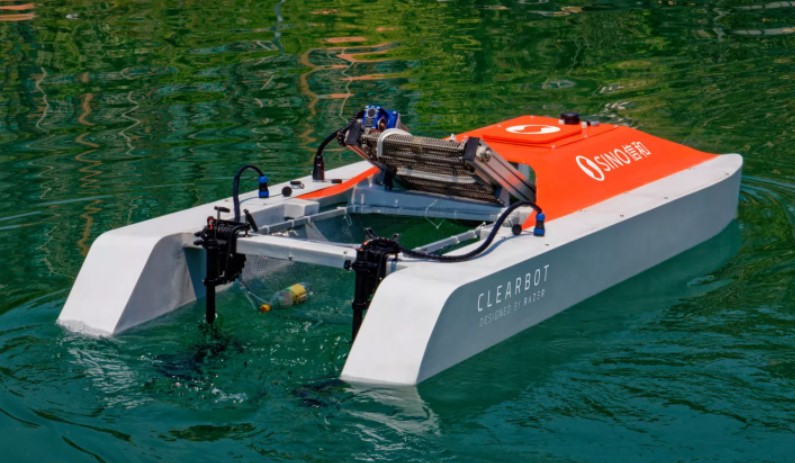

Apple has stopped accepting payments via debit and credit cards for subscriptions and app purchases using Apple ID in India. This comes about as a result of the new auto-debit rules stipulated by the Reserve Bank of India (RBI) that came into effect in 2021. The customers will now need to add money to their Apple funds (just like a prepaid card), which will deduct money from the account every month when the subscription renews.(Apple Insider, The News Minute, 9to5Mac, Apple)


Qualcomm has announced the arrival of Wi-Fi 7 Networking Pro Series – a lineup of Wi-Fi chips for enterprise access points, premium home routers and advanced mesh systems. They offer up to 33 Gbps quad-band connectivity over 16 streams, more stable connection and minimized interference. The four platforms part of this series support much wider 320MHz channels over 2.4GHz, 5GHz, and 6GHz spectrums. Nick Kucharewski, VP and General Manager of Wireless Infrastructure and Networking at Qualcomm, said Wi-Fi 7 and Wi-Fi 6 would be able to coexist for a long time as markets “mature and evolve”.(GSM Arena, Qualcomm)
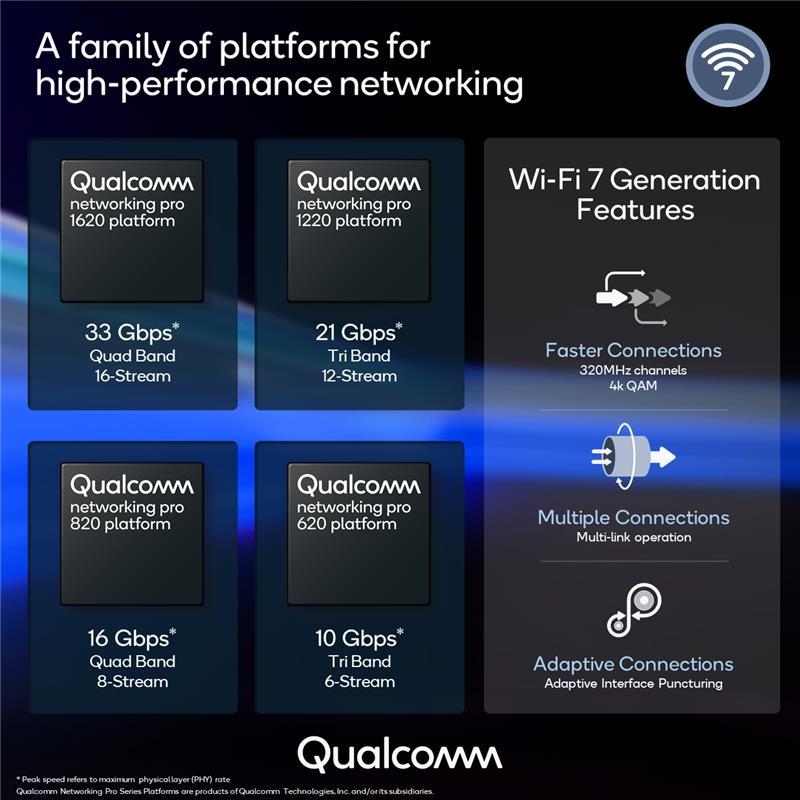
International semiconductor consortium ISMC plans to invest USD3B in a chip fab in Karnataka, India. ISMC is a joint venture between Abu Dhabi-based Next Orbit Ventures and Israel’s Tower Semiconductor, with the latter company in the midst of being acquired by Intel for USD5.4B. ISMC plans to build a 65nm analog semiconductor fabrication factory. ISMC expects to help fund the development with state funds, as part of the Indian government’s USD10B semiconductor and display incentive plan. Indian conglomerate Tata Group is planning to invest up to USD300M on a semiconductor assembly and test unit, thanks to government subsidies. (The Register, Business Standard, Digitimes, Reuters, Data Center Dynamics, My Drivers, EET China)
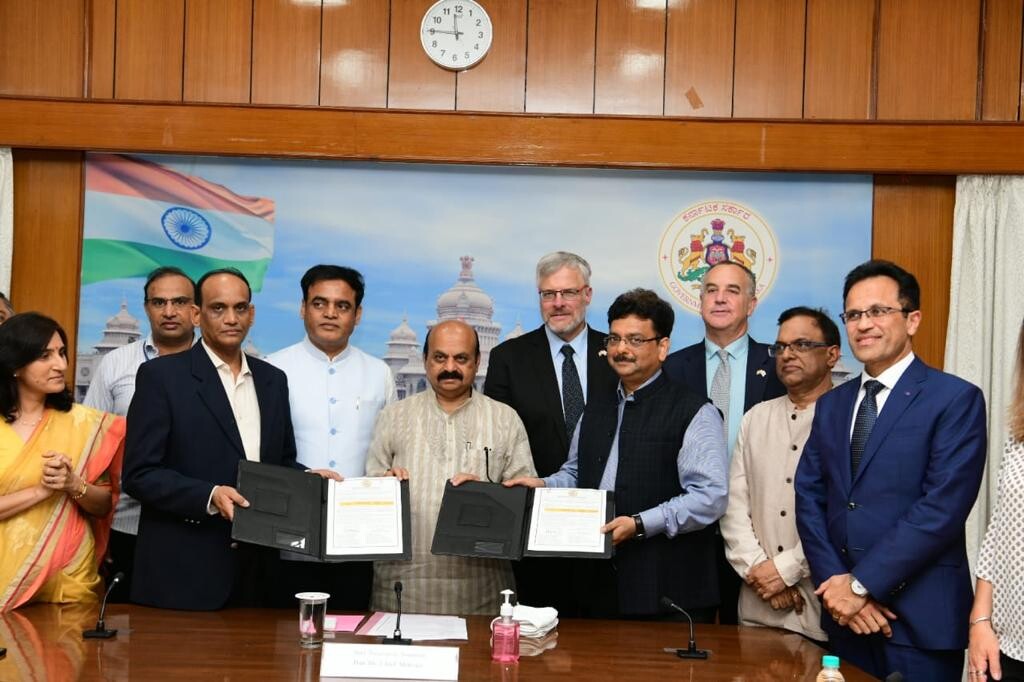
Qualcomm has been rumored to be gearing up for the launch of its next gen flagship chipset, the Snapdragon 8 Gen 1+ SoC. The platform allegedly may arrive in 2H22. The reason is the current epidemic situation in China. The name “Snapdragon 8 Gen 1+” is still just a suggestion, but expectations are the GPU will receive a boost while the CPU will remain the same as the current flagship, one Cortex-X2 at (almost) 3 GHz, three more Cortex-A710 performance units and four Cortex-A510 cores for efficiency. (Gizmo China, GSM Arena, Weibo)

The Securities and Exchange Commission (SEC) has announced settled charges against technology company NVIDIA for inadequate disclosures concerning the impact of cryptomining on the company’s gaming business. The company is paying USD5.5M to settle US SEC charges it failed to disclose that crypto mining played a “significant” role in its surging revenue from GPU sales throughout fiscal 2018. NVIDIA allegedly violated both the Securities Act and Securities Exchange Act when it did not reveal that its success was tied to a “volatile business”, potentially misleading investors who might have thought this was the result of the firm’s usual gaming-focused strategy. (Engadget, SEC)
According to CINNO Research, in 1Q22, smartphone SoC shipments in Mainland China were about 74.39M units, down 14.4% from the same period in 2021, and a slight increase of 0.7% from 4Q21. Among them, the MoM increase in shipments came from the increase in shipments from MediaTek and Qualcomm. From the perspective of brand market share, in 1Q22, MediaTek’s share in the Chinese smartphone SoC market was about 41.2%, an increase of about 7% YoY, ranking first. Qualcomm accounted for about 35.9%, an increase of about 4% YoY, ranking second. (CN Beta, CINNO Research)
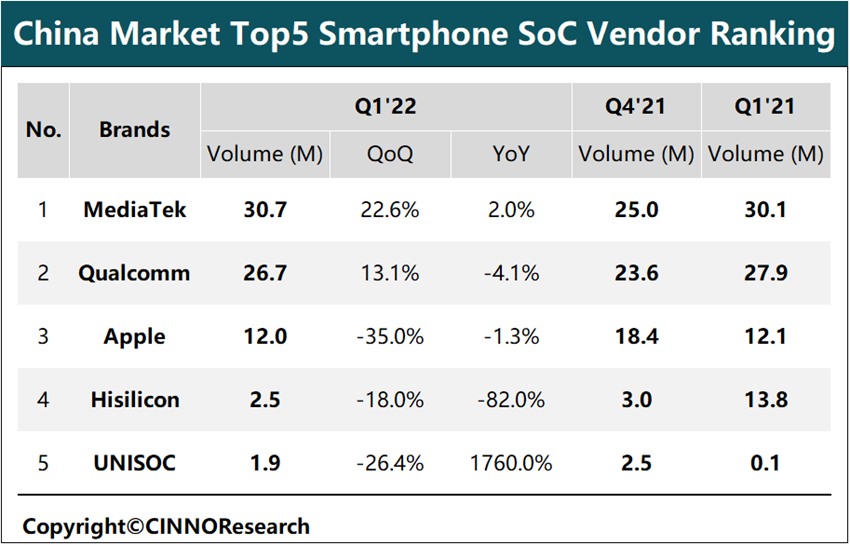
Applied Materials, one of the world’s largest semiconductor display equipment manufacturers, has acquired a nearly 10-acre land parcel and built-up office space spread over 2.6 lakh sq ft in Bangalore’s Whitefield Industrial Area for INR338 crore. Applied Materials has announced its plan to invest over INR1,800 crore in India to expand its operations in the country. The office space and land parcel acquired by the company will be utilised to expand its engineering infrastructure and support the next phase of its growth. (Laoyaoba, India Times, Applie Materials)
Cariad, Volkswagen Group’s software company, will look to Qualcomm Technologies to supply system-on-chips (SoCs) for its software platform designed to enable assisted and automated driving functions up to Level 4. Cariad develops automated driving functions up to Level 4 self-driving functionality and the SoCs from Qualcomm’s Snapdragon Ride Platform portfolio will be an intrinsic hardware component in Cariad’s standardised and scalable compute platform, which is targeted for VW vehicles from the middle of the decade. (Laoyaoba, Qualcomm, Green Car Congress, Computer Weekly)
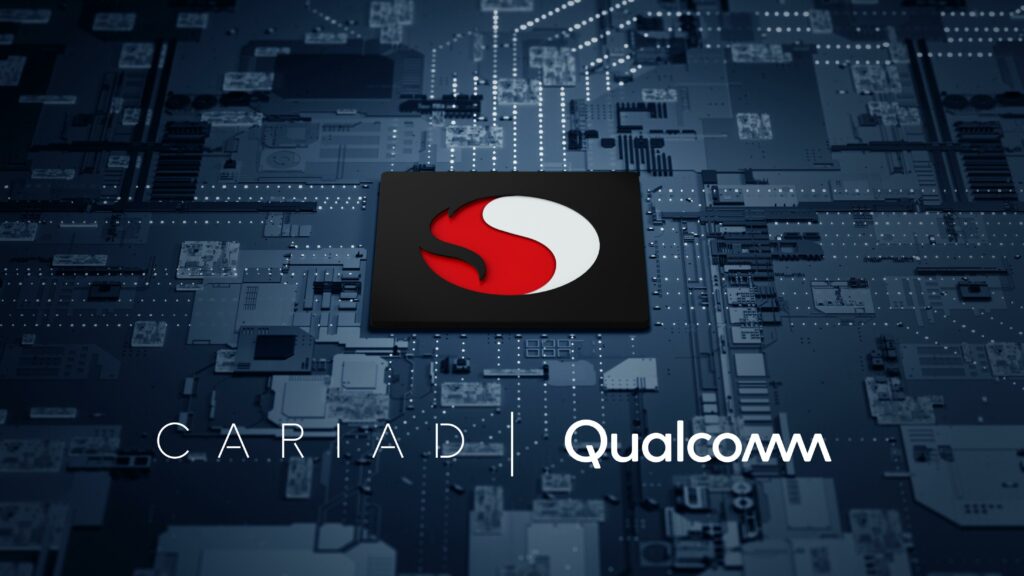
Intel Graphics has acquired Finnish company Siru Innovations. The company has a background in graphics and software development. The Siru team is expected to become part of Intel’s Accelerated Computing Systems and Graphics Group. the company has a deep understanding of computer graphics, including developing solutions from high-level APIs to low level GPU architecture. Siru has experience developing graphics IP for low power SoCs including those from Qualcomm and AMD.(CN Beta, PC Gamer, The Register, UDN, Techpowerup)

The CEO of Display Supply Chain Consultants (DSCC) Ross Young has indicated that Samsung Galaxy Z Flip4 will bring a larger cover display. Young specifies the Flip4’s outer panel will measure over the 2” range. (CN Beta, GSM Arena, Pocket-Lint)

The OPPO clamshell foldable smartphone is rumored to be launched soon, powered by Qualcomm Snapdragon 8 Gen 1, priced at around CNY5,000 (USD756), and could be launched as early as summer 2022. OPPO seems intent on playing the price card when it comes to foldables. (Android Authority, GSM Arena, Sohu, CN Beta)

The CEO of Display Supply Chain Consultants (DSCC) Ross Young has indicated that Google foldable phone Pixel Notepad will have a 5.8” outer display, wider and shorter than Samsung Galaxy Z Fold4’s 6.19” expected screen. The foldable phone is expected to cost USD1,400. (CN Beta, Twitter, GSM Arena)
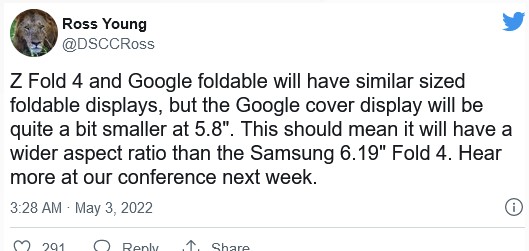
Google hardware lead Rick Osterloh has announced that the company has acquired microLED startup Raxium. Raxium has spent 5 years creating miniaturized, cost-effective and energy efficient high-resolution displays that have laid the foundation for future display technologies. Raxium differentiates itself by using a different manufacturing technique that should be more cost effective.(CN Beta, Google, Engadget, 9to5Google, The Verge)

BOE has manufactured only a meager amount of OLED panels for Apple iPhones since Feb 2022. BOE has begun supplying OLED panels for the 6.1” model of the iPhone 13 series since 2021. The initial reason for the dip early on was the shortage of display driver ICs, which BOE procures from LX Semicon, which is supplying more to LG Display. The most likely reason is that the panel maker likely changed the design of the OLED panels, such as expanding the circuit width of the thin-film transistor, and this was discovered by Apple. This could have caused Apple to tell BOE to halt production. Despite the dip in production volume, BOE’s B11 factory, which manufactures OLED panels for iPhones, at Sichuan is still allegedly operating. (GSM Arena, The Elec)
Visionox has demonstrated InV silk ultra-narrow bezel technology down to 1mm. According to the official introduction, its realization relies on the latest circuit design and FIAA technology, and it can also greatly reduce the power consumption of the screen. In addition to the 1mm narrow edge, Visionox has also demonstrated AMOLED low-frequency LTPS technology, HLEMS light-emitting technology and COE technology, 3 OLED low-power technologies, double-tripod sub-pixel arrangement, and the first payment-level under-screen 3D face recognition solution and flexible mid-size display camera solutions for notebook computers, etc.(My Drivers, CN Beta, GizChina)
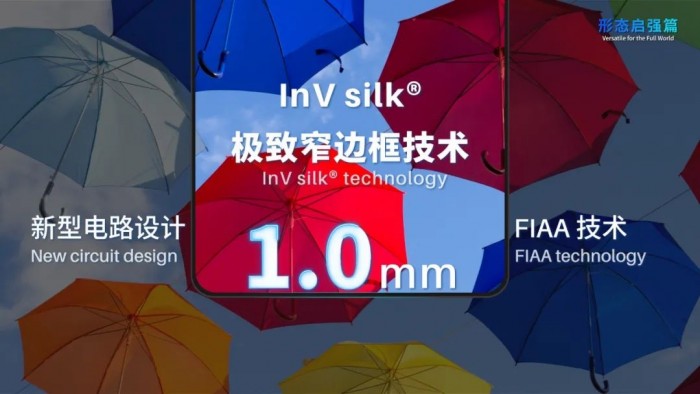
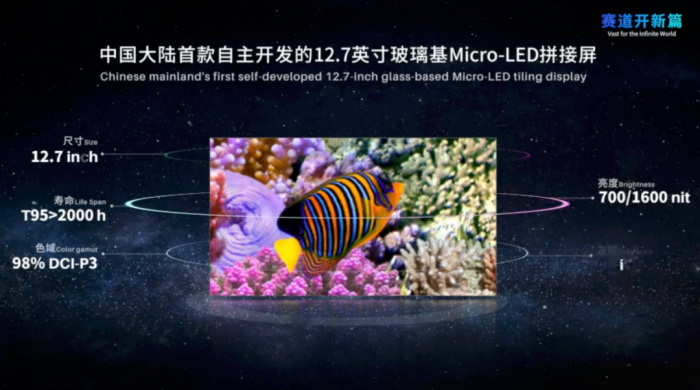

Samsung is allegedly developing an improved 200MP smartphone camera called ISOCELL HP3. The ISOCELL HP1 captures 200-megapixel resolution images in bright conditions. As the environment gets darker, it uses pixel binning technology to increase the pixel size. This allows for more light to reach the sensor. This camera can capture 50MP shots with 2×2 pixel binning (merging four neighboring pixels), which gives us 1.28μm-sized pixels. If it is too dark, it merges 16 neighboring pixes (4×4 pixel binning) to further increase the pixel size to 2.56μm.(Android Headlines, Galaxy Club, GizChina, My Drivers)
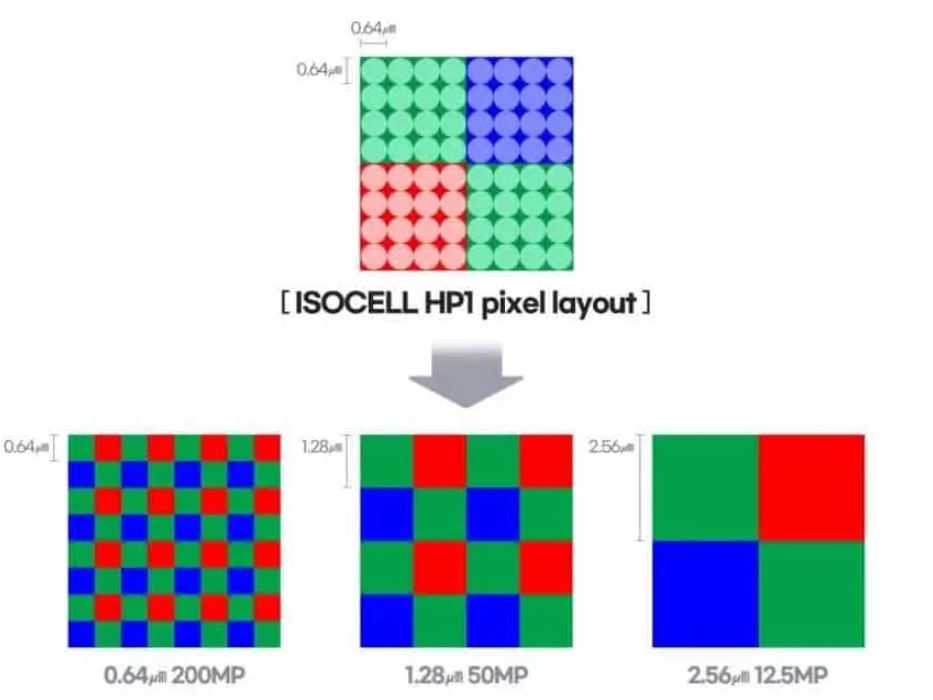

Samsung Semiconductor has officially announced UFS 4.0, the next iteration of Universal Flash Storage. UFS 4.0 promises big performance improvements over its predecessors, UFS 3.0/3.1. For one, the new standard offers a speed of up to 23.2Gbps per lane. Samsung is promising sequential read speeds of up to 4,200 MB/s and sequential write speeds of up to 2,800 MB/s. This is made possible thanks to Samsung’s 7th Gen V-NAND and a proprietary controller. At the same time, UFS 4.0 is also much more power-efficient, offering 46% improved power efficiency over the previous standard. (CN Beta, GSM Arena, Android Police, XDA-Developers, Twitter)
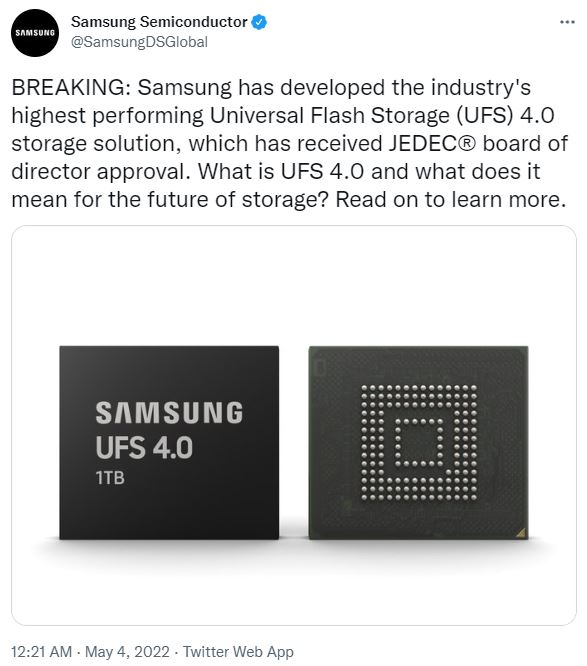
Samsung is launching a new microSD card today, the Samsung Pro Endurance. The card can record non-stop for 16 years, provided the host device manages to offload the content quick enough. The Samsung Pro Endurance is built with in-house NAND flash memory and can last as long as 33 “typical speed-focused cards” which are the Evo Plus series. Reading speeds are up to 100 MB/s, while writing is up to 40 MB/s, depending on the capacity. The cards are rated Class 10 with U3 (UHS Speed Class 3) and V30 (Video Speed Class 30), but once again – only particular versions. The card comes in four sizes – 32GB and 64GB (microSDHC), 128GB and 256GB (microSDXC), and each capacity has different endurance, but all four are in the thousands of hours. Prices start from USD10.99 for the 32GB version and go up to USD54.99 for the 256GB variant.(CN Beta, Samsung, GSM Arena, XDA-Developers)
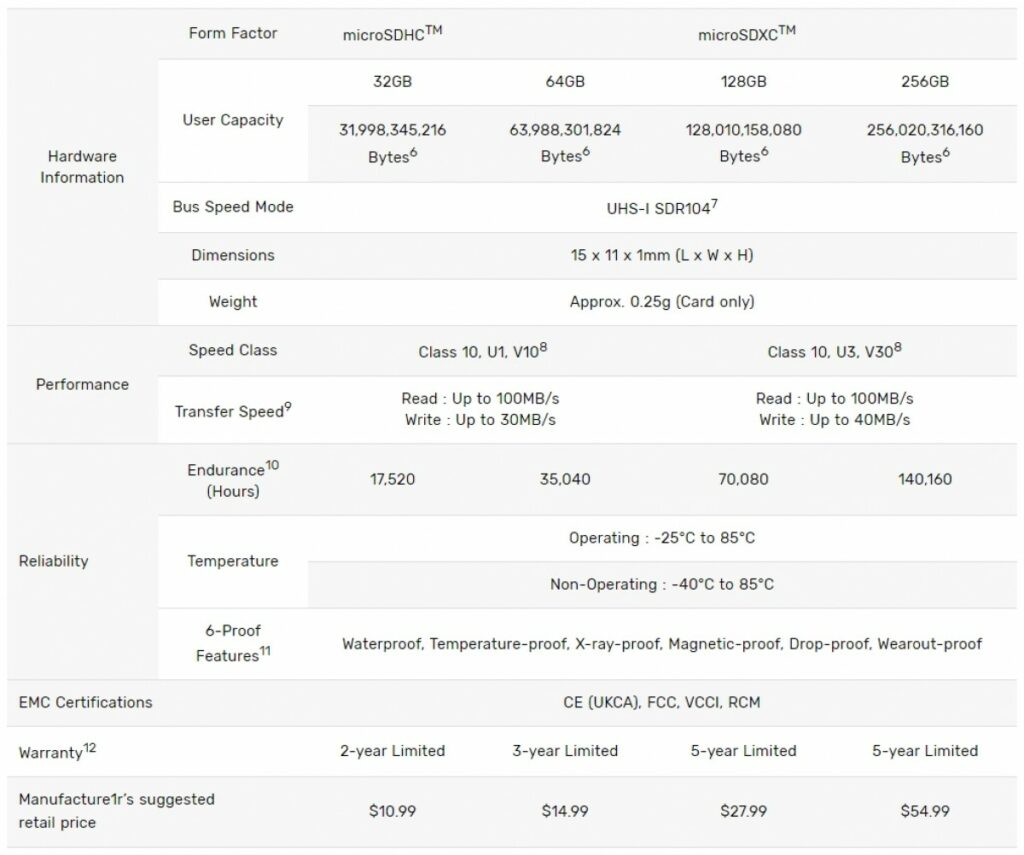
MaxLinear is reportedly in talks to acquire Silicon Motion. MediaTek is also interested in bidding for Silicon Motion. The company’s market value is about USD4.1B. Silicon Motion makes NAND flash controllers for solid-state storage devices. It also supplies data center and specialized industrial and automotive solid-state drives. (CN Beta, Bloomberg, TechNews, Yahoo)

Li-Cycle, an industry leader in lithium-ion battery resource recovery and the leading lithium-ion battery recycler in North America, has announced a strategic partnership with Glencore, a leading provider of primary metals for the production of EV batteries. Glencore will make a USD200M investment in Li-Cycle. Glencore will subscribe for convertible debt in Li-Cycle and Li-Cycle will become a preferred partner for Glencore in the lithium-ion battery recycling sector. (TechCrunch, Reuters, Glencore, Business Wire, Bloomberg)
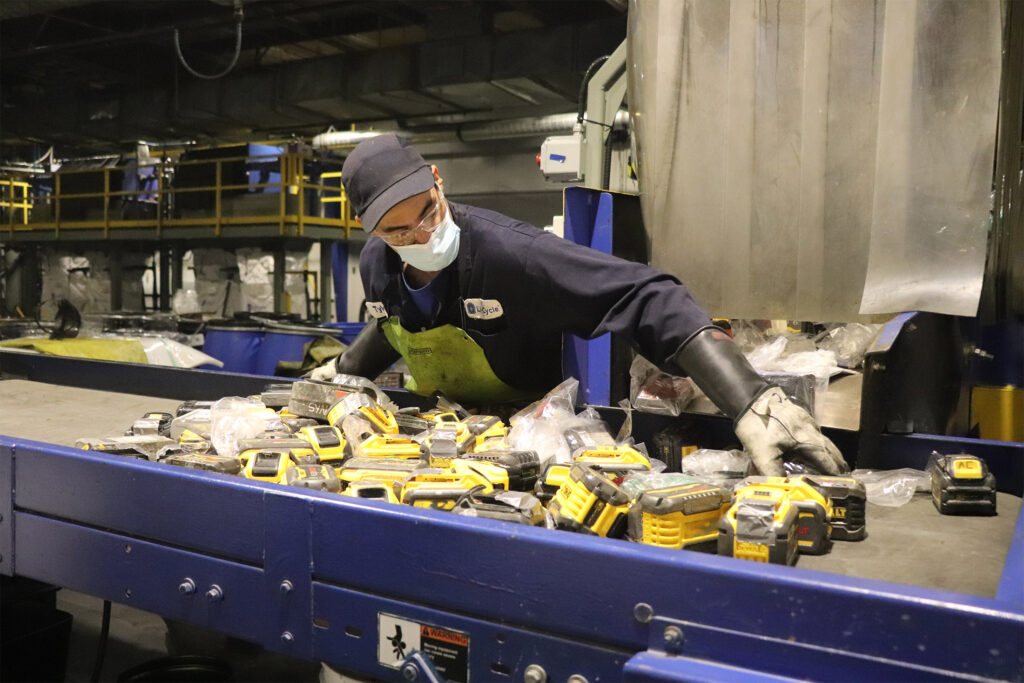
The state of Georgia has offered Rivian USD1.5B in tax incentives for the buzzy EV company to build a factory east of Atlanta. The factory will cost USD5B to construct, and eventually produce 400,000 electric vehicles a year. In order to receive the money, Rivian agrees to create 7,500 jobs, with an average wage of USD56,000 a year, plus benefits, by the end of 2028. (The Verge, Georgia, AP)
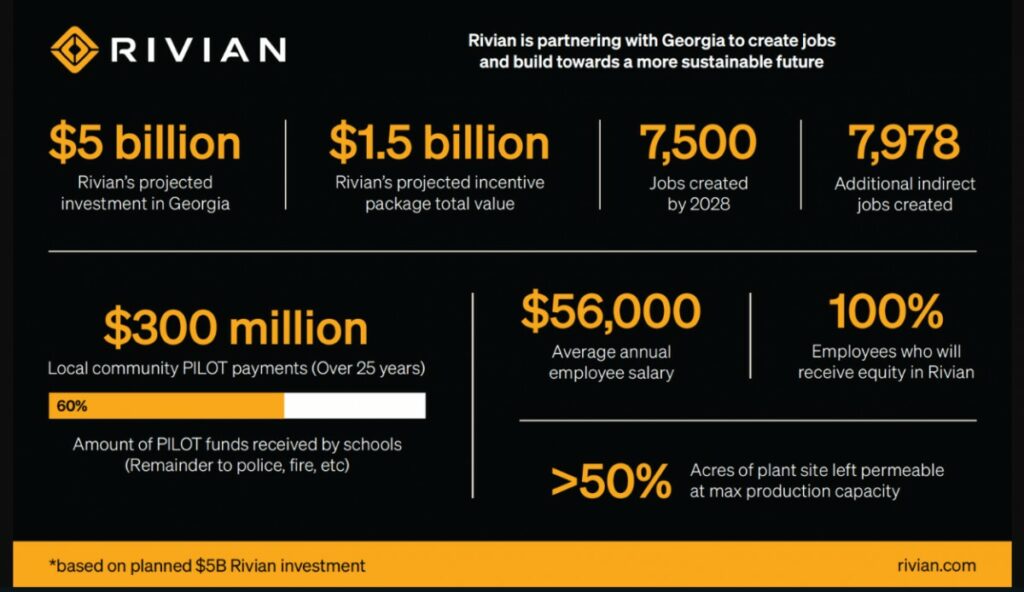
A number of automakers are exploring whether to shear off electric vehicles as a separate business unit, or even a listed company. Their reasons include a need for more agility, a desire to attract capital from Tesla-besotted investors, and a fresh start unburdened by potentially worthless “legacy” assets such as engine factories. They include Ford, with its Blue (internal combustion) and Model e (EV) units; Geely, with its coming Polestar SPAC reverse-merger listing; and Renault (weighing a separate listing for EV assets). Others are planning to stay the course, at least for now. Stellantis CFO Richard Palmer has indicated that the company does not anticipate any fundamental changes to its business structure. Volkswagen Group CEO Herbert has said that the company is making the best use of ICE assets to be fast and competitive in the electric world. Mercedes-Benz finance chief Harald Wilhelm has also indicated that the company is not pursuing the strategy to break up the company. (Laoyaoba, Auto News)

Apple, Google and Microsoft are teaming up to expand support for a password-free sign-in standard from the FIDO Alliance and World Wide Web Consortium. The new capability will allow websites and apps to offer consistent, secure, and easy password-less sign-ins to consumers across devices and platforms. Password-only authentication is one of the biggest security problems on the web, and managing so many passwords is cumbersome for consumers, which often leads consumers to reuse the same ones across services. (Engadget, Apple)
